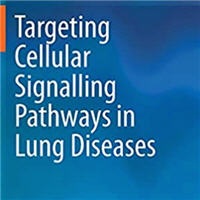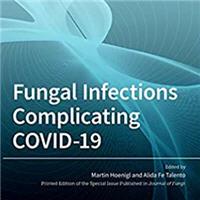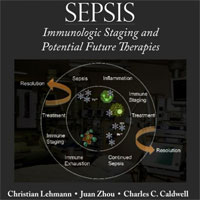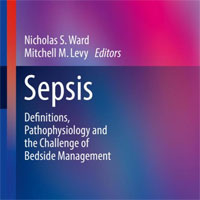Tag: coronavirus
COVID-19 and Critical Illness Neuropathy
We have described COVID patients in the ICU with critical illness neuropathy (CIP). COVID-related CIP could have implications for the functional recovery and rehabilitation strategies. Nerve conduction studies showed a... read more
Interhospital Transfer of COVID-19 Patients Treated with High-flow Nasal Oxygen Therapy
At the start of the COVID-19 pandemic, early intubation was recommended on the basis of worldwide observations of severe hypoxemia. However, some patients were ultimately able to benefit from high-flow nasal cannula (HFNC)... read more
CCSC Encourage Flu Shots Amid COVID-19 Spread
The members of the Critical Care Societies Collaborative (CCSC), which includes the American Association of Critical-Care Nurses (AACN), American College of Chest Physicians (CHEST), American Thoracic Society (ATS), and Society... read more
COVID-19: Restricted Visitation Policies in Acute Care Settings
Patients, families, and healthcare professionals were impacted by restricted visitation polices in acute care settings during COVID-19. The consequences of this approach on patients and families are understudied and warrant... read more
Short-term and Long-term Rates of Postacute Sequelae of COVID-19 Infection
In this systematic review, we evaluated the temporal progression of clinical abnormalities experienced by patients who recovered from an infection with SARS-CoV-2, starting with a mean of 30 days post–acute illness and... read more
Longitudinal Respiratory Subphenotypes in COVID-19 Patients with ARDS
COVID-19-related ARDS has no consistent respiratory subphenotype. Patients diverged from a fairly homogenous to a more heterogeneous population, with trajectories of ventilatory ratio and mechanical power being the most discriminatory.... read more
Suboptimal COVID-19 Vaccination Coverage Implications in Florida and Texas
In July, 2021, another wave of COVID-19 began in the USA as the highly infectious delta (B.1.617.2) SARS-CoV-2 variant drove outbreaks predominantly affecting states with relatively low vaccination coverage. Some US states... read more
ECMO for COVID-19
Mortality after ECMO for patients with COVID-19 worsened during 2020. These findings inform the role of extracorporeal membrane oxygenation (ECMO) in COVID-19 for patients, clinicians, and policy makers. In 2020, 4,812... read more
Dexamethasone 12 mg vs. 6 mg for COVID-19 Patients with Severe Hypoxia
Among patients with COVID-19 and severe hypoxia, dexamethasone 12 mg did not result in statistically significantly more days alive without life support at 28 days than dexamethasone 6 mg. However, the confidence interval... read more
Therapeutic Anticoagulation vs. Usual Care in Noncritically Ill COVID-19 Patients
Among noncritically ill patients with COVID-19 infection, therapeutic anticoagulation with heparin improved the proportion of patients who survived without need for organ support. Therapeutic anticoagulation was associated... read more
We studied how to reduce airborne COVID spread in hospitals. Here’s what we learnt
Melbourne’s second wave of COVID-19 last year, which led to a lockdown lasting more than 100 days, provided us with many lessons about controlling transmission. Some of these are pertinent as New South Wales endures its... read more
COVID-19 and Anticoagulation: Full Dose or Prophylactic Dose?
In CRITICALLY ILL patients with COVID-19, an initial strategy of therapeutic-dose anticoagulation is not associated with a greater probability of survival to hospital discharge or a greater number of days free of cardiovascular... read more
Convalescent Plasma for COVID-19 in Hospitalised Patients
Convalescent plasma (CP) and standard of care (SOC) did not result in a higher proportion of clinical improvement on at day 28 in hospitalised patients with COVID-19 compared to SOC alone. This is an investigator-initiated,... read more
Predicting Adverse Outcomes in COVID-19 Patients Using BV5%
Evidence suggests that vascular inflammation and thrombosis may be important drivers of poor clinical outcomes in patients with COVID-19. We hypothesized that a significant decrease in the percentage of blood vessels with... read more
COVID-19 Immune Evasion by the B.1.427/B.1.429 Variant of Concern
As battles to contain the COVID-19 pandemic continue, attention is focused on emerging variants of the severe acute respiratory syndrome coronavirus 2 (SARS-CoV-2) virus that have been deemed variants of concern because they... read more
When COVID-19 Complicates Other Diagnoses
The medical community is rapidly trying to identify complications and patterns of disease to improve patient outcomes as the COVID-19 pandemic continues. Numerous studies have shown varying degrees of liver damage in... read more
Targeting Cellular Signalling Pathways in Lung Diseases
The book comprehensively reviews and provides detailed insight into the cellular and molecular signalling mechanisms involved in pathophysiology of various respiratory diseases, towards developing effective therapeutic strategies... read more

COVID-19 Variant Classifications and Definitions
Genetic variants of SARS-CoV-2 have been emerging and circulating around the world throughout the COVID-19 pandemic. Viral mutations and variants in the United States are routinely monitored through sequence-based surveillance,... read more
Inhaled Budesonide Improves Time to COVID-19 Recovery
Inhaled budesonide improves time to recovery, with a chance of also reducing hospital admissions or deaths (although our results did not meet the superiority threshold), in people with COVID-19 in the community who are at... read more
Fungal Infections Complicating COVID-19
Coronavirus disease 2019 (COVID-19), caused by the severe acute respiratory syndrome coronavirus 2 (SARS-CoV-2), spread globally to pandemic proportions. Although the majority of cases have asymptomatic or mild infections,... read more

Time Course of Risk Factors Associated with COVID-19 Mortality
The present multicentric study describes 1,260 critically ill patients with COVID-19-associated acute respiratory failure consecutively admitted to 24 Italian ICUs during the first pandemic wave. This study specifically... read more
COVID-19 Variants in Patients with Immunosuppression
Patients with immunosuppression are at risk for prolonged infection with severe acute respiratory syndrome coronavirus 2 (SARS-CoV-2). In several case reports, investigators have indicated that multimutational SARS-CoV-2... read more









